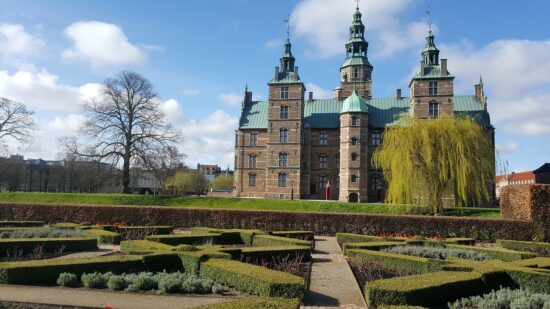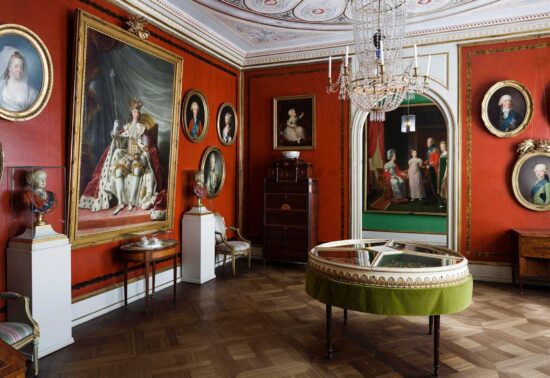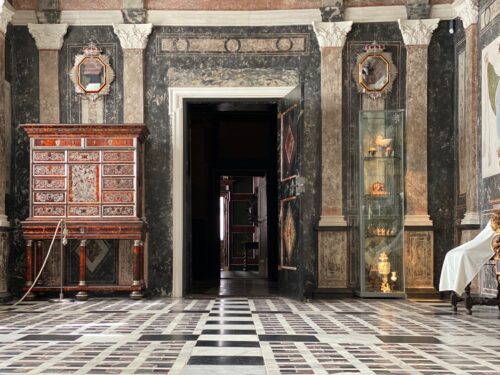Rosenborg Palace
About 10 minutes northeast of Trinitatis Church lies the 400-year-old Renaissance Rosenborg castle and the popular Kongens Have (King’s Garden). Rosenborg Palace was built in the period 1606-34 as Christian IV’s summerhouse ¨in the countryside¨ just outside the ramparts of Copenhagen at the time. Christian IV was very fond of the palace and often stayed at the castle when he resided in Copenhagen, and it was here that he died in 1648.
After his death, the palace passed to his son King Frederik III, who together with his queen, Sophie Amalie, carried out several types of modernization. The last king who used the place as a residence was Frederik IV, and around 1720, Rosenborg was abandoned in favor of Frederiksborg Palace.


Through the 1700s, considerable art treasures were collected at Rosenborg Castle, among other things items from the estates of deceased royalty and from Christiansborg after the fire there in 1794. Soon the idea of a museum arose, and that was realized in 1833, which is The Royal Danish Collection’s official year of establishment.
The castle opened to the public in 1838, with the visitor being able to have a tour through the royal family’s history from the time of Christian IV up to the visitor’s own time.
Along with the opening, there was a room set up with Frederik VI’s things, even though the king did not die until the following year. The chronological review and the furnished interiors, which even today are characteristic of Rosenborg, were introduced here for the first time in European museum history.


The collection continued to grow, and in the 1960s, the initiative was taken to set up a section at Amalienborg for the newer part of the Royal House. This idea was realized in 1977, and the museum has been housed in rooms at Christian VIII’s Palace since 1994.
The line of division between the two sections is set in 1863 so that Rosenborg exhibits the Oldenborg kings and Amalienborg exhibits the Glücksborg monarchs. (Description / More)



